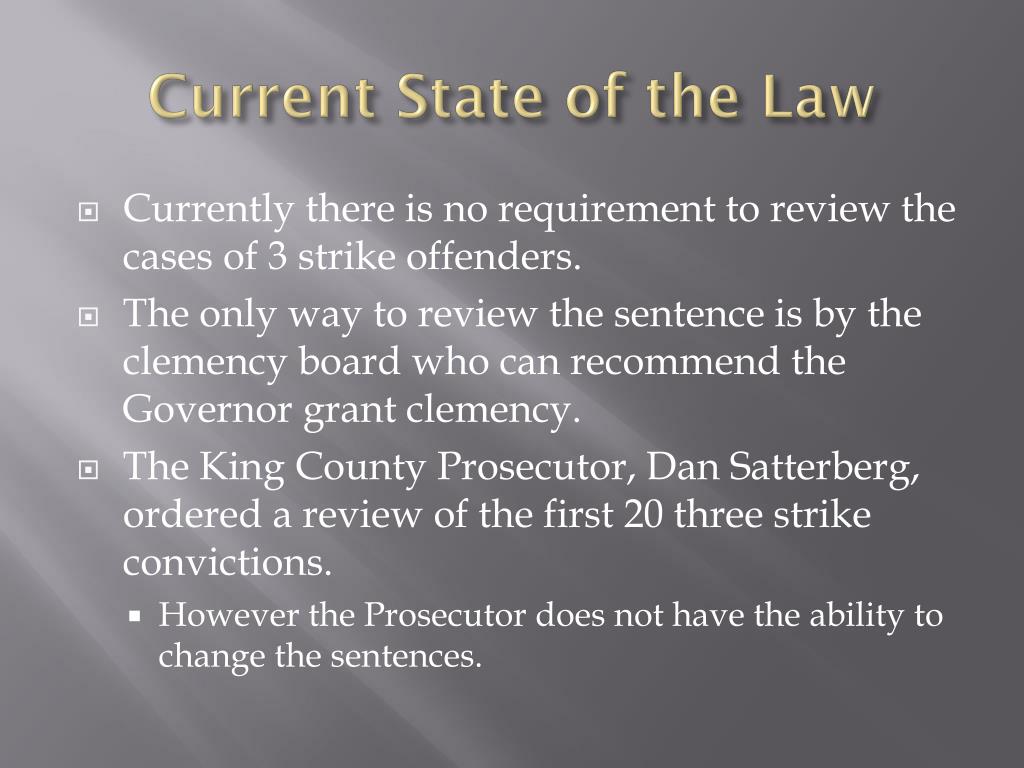

While three-strikes laws aim to reduce violent crime and address individuals whose conduct have not been deterred by more conventional approaches to punishment, they have been subject to constitutional challenges. shall be sentenced to a term of life imprisonment by the court, with no eligibility for parole." Furthermore, most three-strikes laws operate across jurisdictions, meaning that violations of serious felonies in one state will count as a strike for the purposes of another state's application of their three-strikes law. who has been convicted of two or more crimes that were committed on prior and separate occasions. For example, under California's three-strikes law, a defendant who is convicted of a felony and has previously been convicted of two or more serious or violent felonies must receive an "indeterminate term of life imprisonment." New Jersey's three-strike law is similar, stating that "a person convicted of a crime.

Three-strikes laws generally mandate a life sentence for the third violation of violent felonies. As shown with other kinds of criminal justice policies, “three strikes” has had a disproportionate impact on racial and ethnic communities.Three strikes, or three-strikes law, is a criminal sentencing structure in which significantly harsher punishments are imposed on repeated offenders. Research has shown that, the more low-level the offense-such as the kinds of crimes for which most "strikers" are serving time-the less difference between rates of criminal behavior between whites, African-Americans, and Latinos. Social scientists have shown that despite the fact that racial and ethnic minorities are incarcerated at rates much higher than whites, rates of criminal behavior and offending are similar between groups for a wide variety of offenses.People sentenced under the “three strikes” law are more likely to be serving a sentence under the law for non-violent offenses than violent ones.An increasingly larger part of that population is made up of people serving a second or third strike The California prison population grew from 125,473 in 1994 to 153,783 in June 2003, a 22.6 percent increase.How has “three strikes” impacted the children of people who are imprisoned?Īmong the significant findings are the following:.What has been the fiscal impact of “three strikes” in California?.Has the “three strikes” law been associated with larger decreases in crime within California (county-by-county), and how does California's crime drop-and those of other states that have "three strikes" laws-compare with states without them?.Has the “three strikes” law disproportionately impacted African-Americans and Latinos?.



 0 kommentar(er)
0 kommentar(er)
